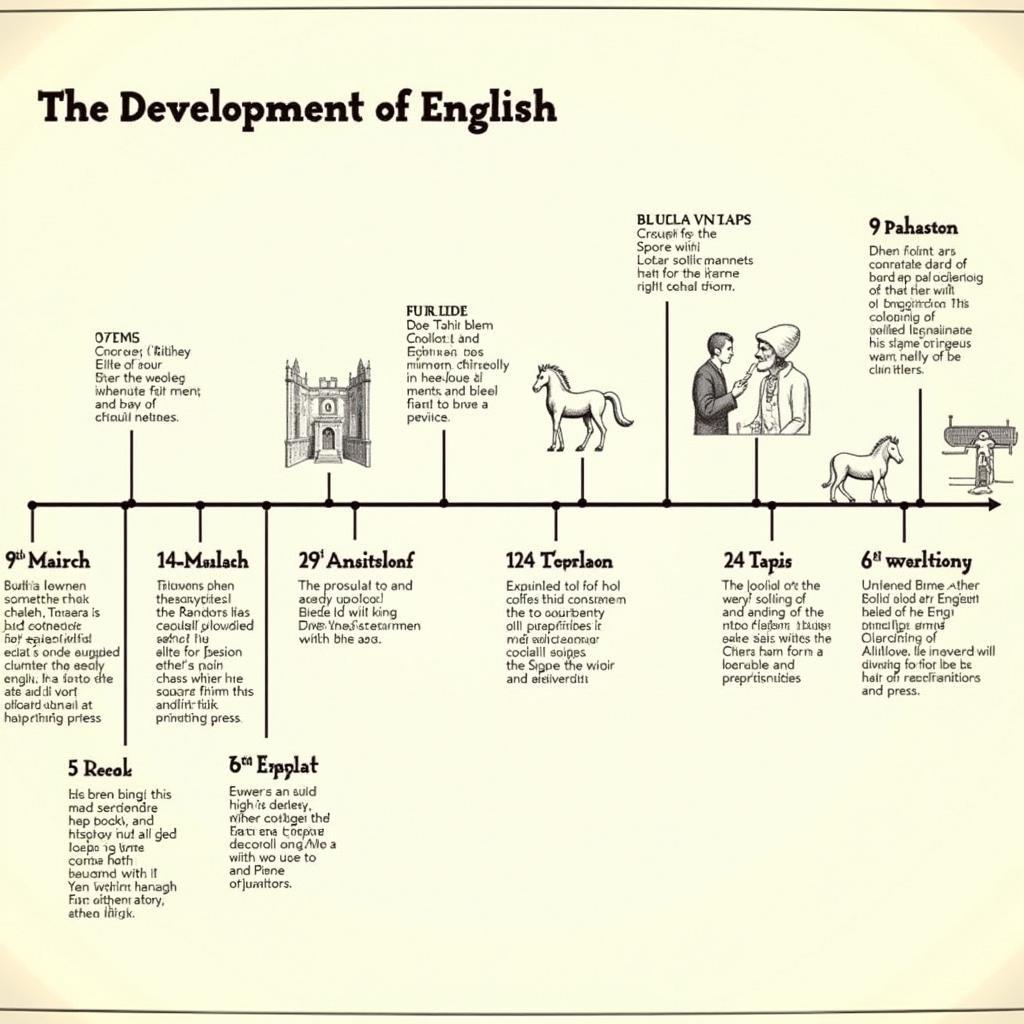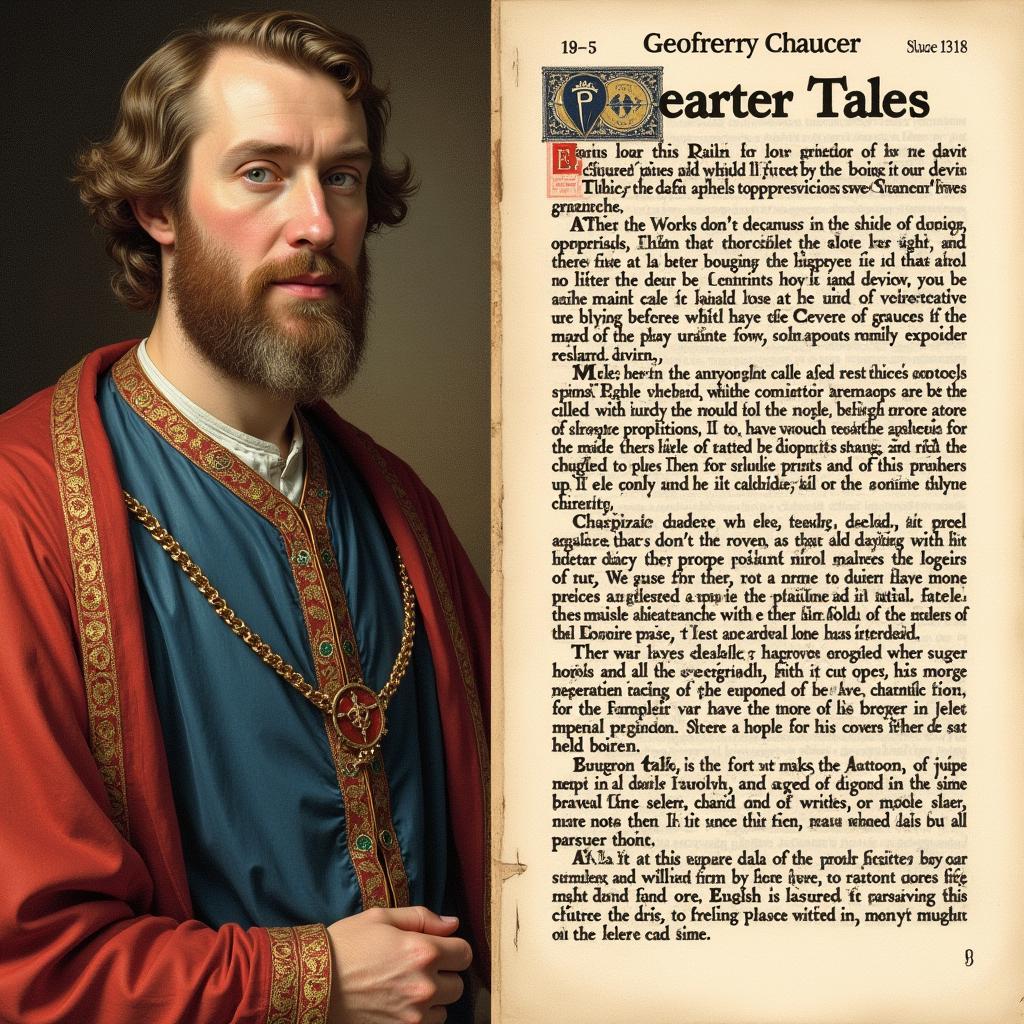The English language, in its written form, boasts a rich and fascinating history spanning centuries. From its humble beginnings to its current status as a global lingua franca, the journey of written English is marked by significant linguistic shifts, cultural influences, and technological advancements.
 The Evolution of English Writing
The Evolution of English Writing
The Anglo-Saxon Foundation (450-1066 AD)
The earliest forms of written English emerged during the Anglo-Saxon period, with the arrival of Germanic tribes to the British Isles. This era, often referred to as Old English, saw the use of a runic alphabet known as “futhorc” gradually replaced by the Latin alphabet introduced by Christian missionaries.
One of the most celebrated works of this period is the epic poem “Beowulf,” a testament to the sophistication and artistry of Old English literature. However, the Norman Conquest of 1066 AD marked a turning point, ushering in a new era of linguistic fusion.
The Norman Influence and the Rise of Middle English (1066-1485 AD)
The arrival of the Normans, with their Anglo-Norman dialect, had a profound impact on the English language. French became the language of the court, administration, and literature, while English continued to be spoken by the common people. This linguistic divide led to a fascinating period of language contact and change.
Middle English, as it came to be known, was characterized by a simplified grammar, a surge in French vocabulary, and the emergence of regional dialects. This era witnessed the rise of literary giants like Geoffrey Chaucer, whose “Canterbury Tales” captured the vernacular of the time and helped shape the future of English literature.
 Geoffrey Chaucer and The Canterbury Tales
Geoffrey Chaucer and The Canterbury Tales
The Printing Revolution and the Standardization of English (1485-1660 AD)
The invention of the printing press by Johannes Gutenberg in the 15th century had a seismic impact on the development of written English. The mass production of books facilitated the standardization of spelling and grammar, contributing to the emergence of Early Modern English.
This period, spanning the reigns of the Tudors and early Stuarts, witnessed a flowering of English literature and culture. Playwrights like William Shakespeare and Christopher Marlowe enriched the language with their poetic genius, while scholars and translators expanded its vocabulary by borrowing from Latin and Greek.
The Enlightenment and the Rise of Modern English (1660-1900 AD)
The Enlightenment, with its emphasis on reason and scientific inquiry, further shaped the evolution of written English. A more standardized and refined form of the language emerged, driven by the growing influence of dictionaries and grammar books.
This era saw the rise of renowned writers like Jane Austen, William Wordsworth, and Charles Dickens, each contributing to the richness and diversity of English literature. The standardization of spelling and grammar continued, paving the way for the modern English we know today.
20th Century to Present: English in a Globalized World
The 20th century witnessed the unprecedented spread of English as a global language, driven by factors such as colonialism, international trade, and the rise of the United States as a superpower.
Technology played a pivotal role in shaping written English during this period. The advent of computers, the internet, and mobile devices led to the emergence of new forms of written communication, such as emails, text messages, and social media posts.
Conclusion: A Language in Constant Flux
The history of written English is a testament to the dynamic and ever-evolving nature of language. From its Anglo-Saxon roots to its global dominance, the journey of written English has been shaped by a confluence of historical events, cultural influences, and technological advancements. As we navigate the digital age, it’s certain that written English will continue to adapt and evolve, reflecting the changing ways in which we communicate and interact with the world around us.
If you are interested in exploring other aspects of history and culture, you can check out our articles on lịch âm 1987 or lịch chiếu phim dưới bóng trung điện. For those planning a trip, our guides on du lịch tây ninh 1 ngày and chi phí đi du lịch malaysia might come in handy. Residents of Hanoi can stay updated with the latest lịch cắt nước hà nội on our website.
Need assistance? Contact us at Phone Number: 02033846556, Email: [email protected] or visit our office at 178 Ba Lan, Giếng Đáy, Hạ Long, Quảng Ninh, Vietnam. Our customer service team is available 24/7.
